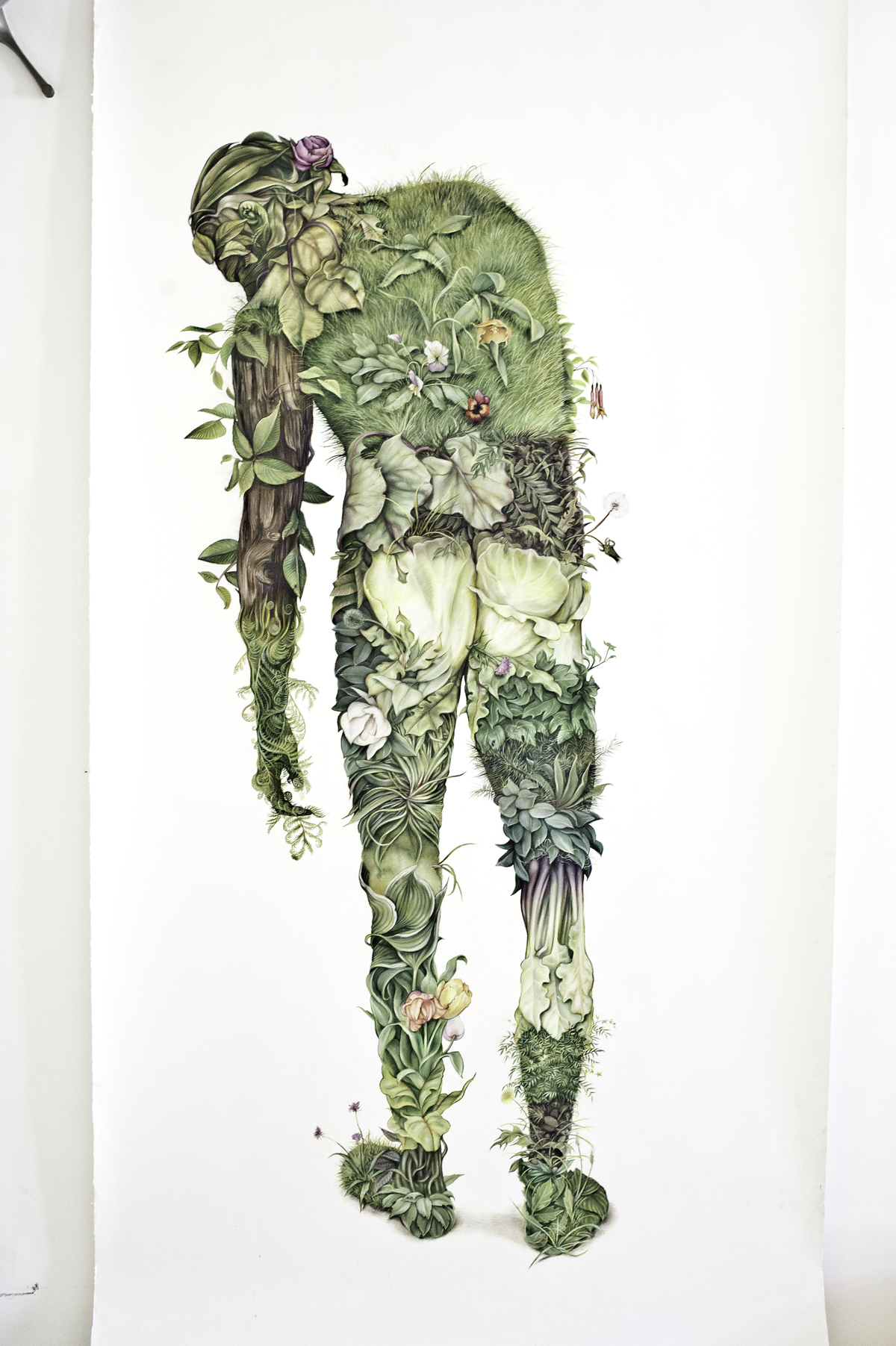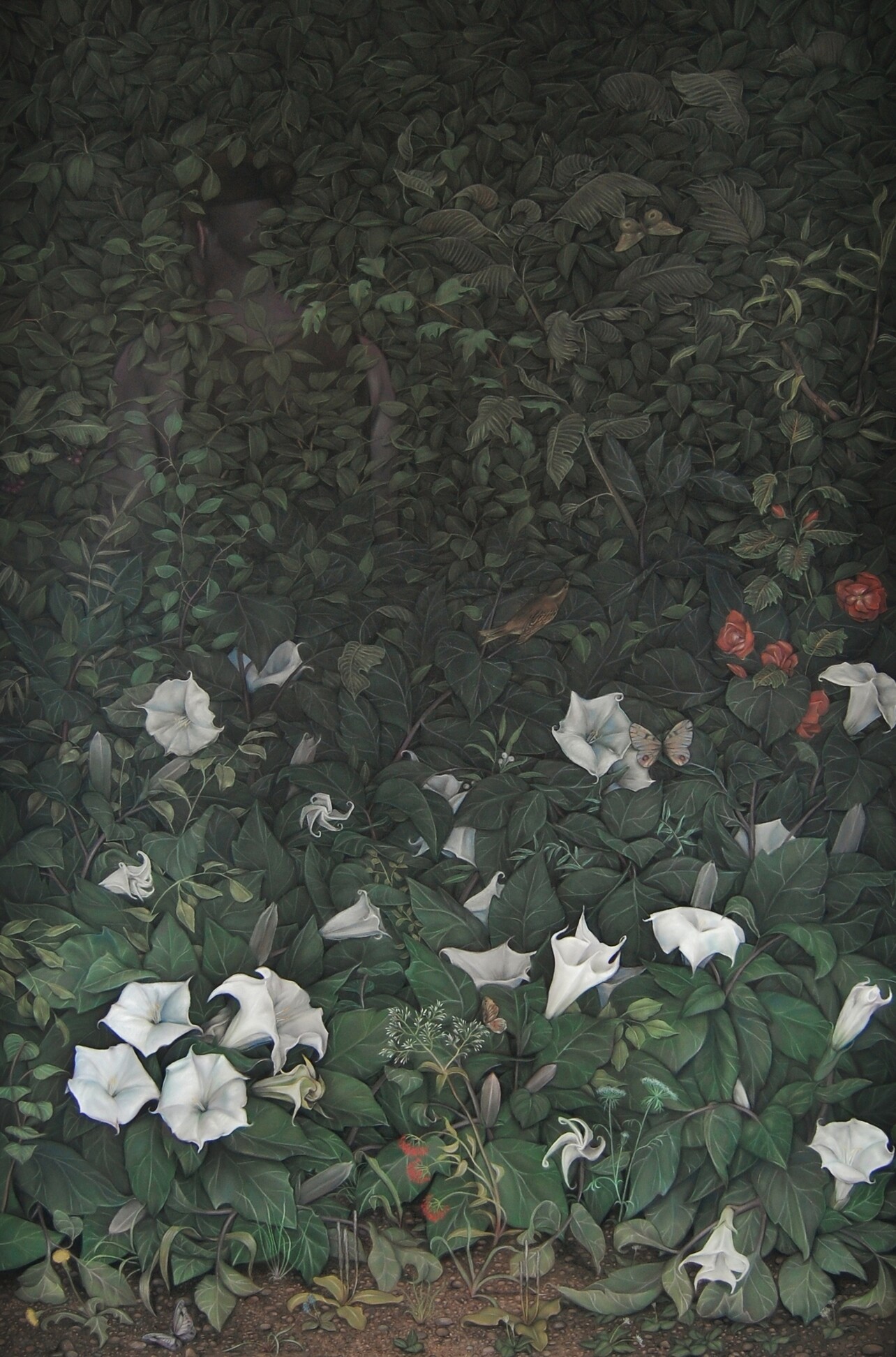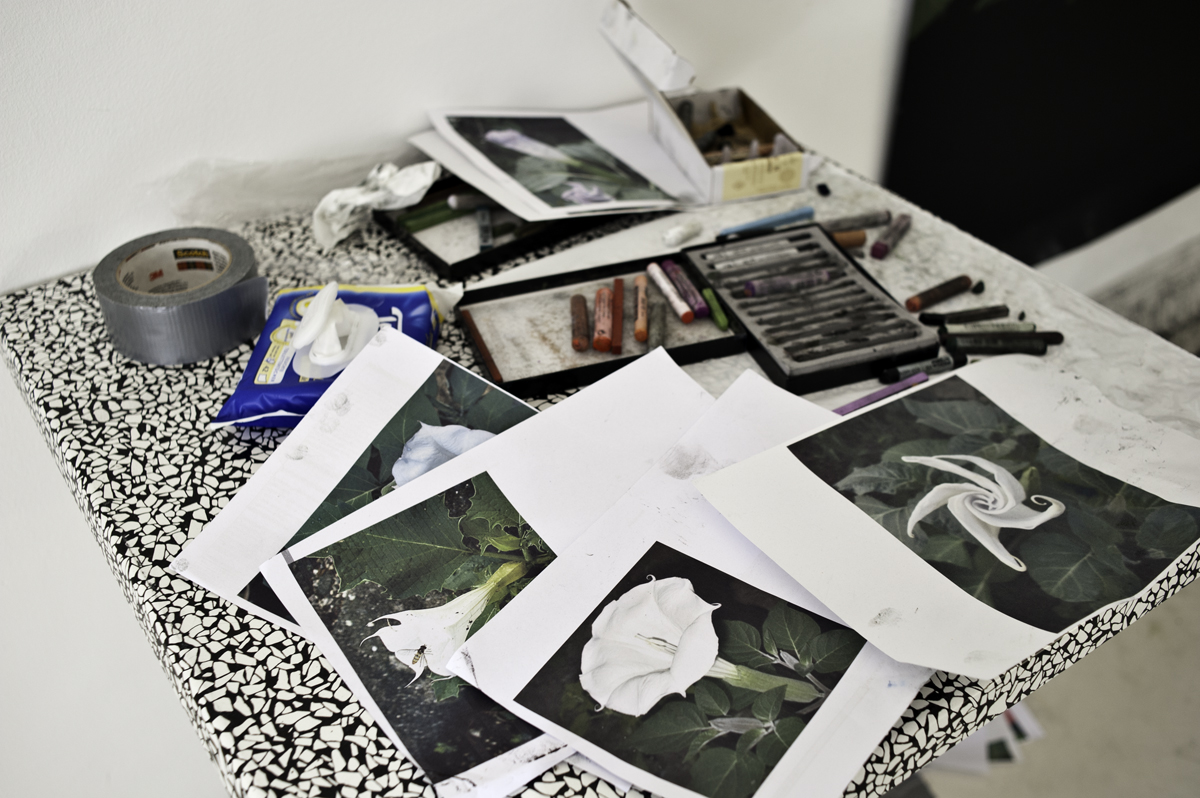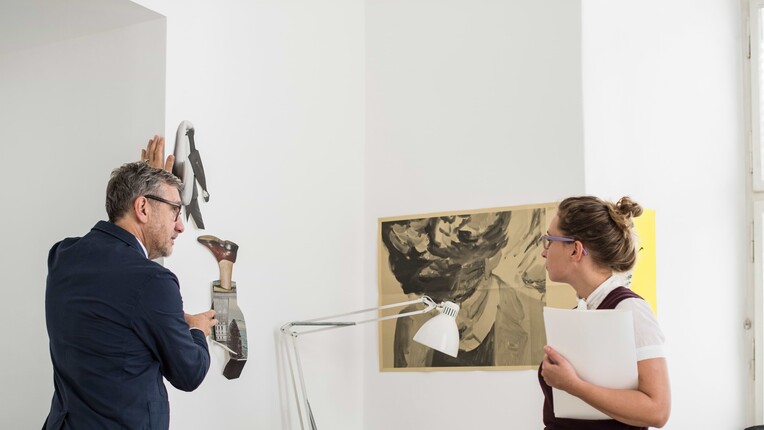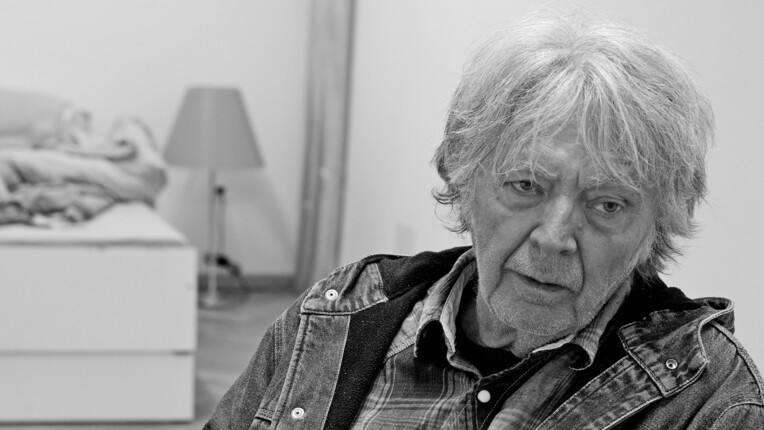
"Maybe you should turn it on yourself"
We met Canadian artist Zachari Logan in his studio and talked about his self-portraits, male identity, and the upcoming exhibition "Faceless" at freiraum quartier21 INTERNATIONAL.
I see a lot of late-Renaissance or Baroque references in your work, especially in your drawings [pastel on paper], which have a fantasticaland nearly mythic aura. What would you say if I called you a „modern-day Arcimboldo“?
I would love that! I would think that was wonderful, especially because the work that I made last year was a kind of incorporation and homage to Arcimboldo. I didn’t actually know that the Kunsthistorische Museum has such a remarkable collection.
But modern-day Arcimboldo … well … I’m fascinated by portraiture. For a long time I’ve been dealing with my own body. Originally when I started working with images of nature, animals and plants, even before the „Garden series“ , I was trying to figure out ways to still work with my body, but I wondered how to transform it. One of the obvious ways was to take references from art history. And my favorite period is Baroque.
So you’re playing with historical depictions of male identity.
Yes. In 2009 when I was in Paris, I went to the Louvre and drew from the neo-classical paintings in the grand hall. I drew from portions of paintings I was interested in, which resulted in focusing on the hands, male hands, that were touching each other. The figures in the paintings weren’t necessarily holding hands, but they had intimate, I wouldn’t say homosexual, but homosocial moments. So these portions within these large, huge paintings that showed death, colonialism and despair interested me. Within these paintings there’s a harsh masculine ideal being portrayed, but there are tiny, beautiful moments of intimacy.
This was the first time I took direct references. When I was back home in Saskatoon, I ended up using those for one massive painting, titled Beautiful Losers. It was close to 20 feet, a homage to the neo classical painters. After that I stopped painting for a while [laughing]. I was very specific about the references even though the result was quite ambiguous and it was vague from where the references came. When I show the painting I show them in context with the drawings I made in Paris. So, in terms of Arcimboldo, it’s kind of a continuation of that. Both Green Man and its pair, Wild Man (2012) are a case in point, these drawings, from my Wilderness Tips exhibition here last fall were in direct reference to the way Arcimboldo defines figuration through fantastical combinations of plant and animal life.
And what about these beautiful flowers on your wall?
I was invited by curator Bogomir Doringer to contribute to the exhibition “Faceless”, which will be opened in freiraum quartier21 INTERNATIONAL in June. There are some previous works that Bogomir would like to show in the exhibition where I am covering my face with my hair. So he’s really interested in those. But well, what you see here I’m doing particularly for the show. My body will be in the picture, but you will only see something small, possibly a hand.
The garden is the „counterpart“, the body is rather isolated, kind of swallowed by the nature.
It’s a psychological space as much as it’s a real space, because the garden subject is also a reference to a famous tapestry series, The Unicorn Tapestries, where my body evokes the character of the unicorn within these landscapes. [The seven individual hangings known as "The Unicorn Tapestries," are among the most beautiful and complex works of art from the late Middle Ages that survive. Luxuriously woven in fine wool and silk with silver and gilded threads, the tapestries vividly depict scenes associated with a hunt for the elusive, magical unicorn.] The space in these gardens is meant to be both flattened as a tapestry might break down space with the use of pattern, but also have the sense of expansive space, like the background within a Caravaggio painting.
The flower I’m using predominantly for the work I am presently drawing, the Datura (also known as Jimson Weed) is very specific. It only blooms for one night and then it dies. It’s completely poisonous, so it’s dramatic, mysterious and mystical. If people used it as a drug and take more than a tiny portion, it would likely kill them. It can keep produce psychosis for up to two weeks in users. It’s not something you want to take.
All of the plants depicted in my pictures are plants that I collect from different residencies. I kind of recycle from other places, so my gardens become a semblance of memory and recollection.
One of my earlier residencies was in Tennessee. The plants and animals there struck me, they were almost fantastical in a way. It’s sub-tropical, so turtles, giant toads and massive bright insects exist around you daily. Where I come from in Western Canada it’s beautiful in the summertime but it gets 40 below in the winter, so there is no possibility for these particular types of plants and animals to exist. This is where I started collecting these images to bring them back to my home as subject material. In the landscapes I’ve constructed, rarely is any plant biologically correct, I combine different plants from different places. I have a friend who is biologist and he was in my studio once looking at my pictures being amused because he knows that it’s botanically speaking, wrong. And I love that. The plants become experiential, personal; metaphorical elements of memory, I’m creating a mind space.
Your pictures are not only beautiful to look at, but also it must be a beautiful process to create them.
Yes, it is!
Your self-portaits are mainly body-portaits, which means you’re focussed on the representation of the male (naked) body. Anyway, isn’t it narcissistic too? Do you somehow learn about your identity through the creation of a personal „mirror“?
I was using images of other men, but there was a strange distance, the drawings were cold. One of my professors one day came to me and said “Maybe you should turn it on yourself” I’m so happy I listened to her advice. I did one… I continued. And I didn’t stop. I painted myself either naked or partially clothed over a period of 4 years exclusively. It was much more effective to use my own body. If I’m using my body I’m the objective, I’m myself, I have control over it. If I work with others, I take control over someone’s image. There is something you are doing to another person’s image even if they allow the image to be used and reproduced. There is kind of a trick that you’re doing when you’re using your own body. It’s funny because when I look at these pieces now and I look at the work I’m doing presently, I see that my body seems to disappear…
The less you show the more we see?
Yes, it’s weird. I don’t know if that makes sense. I used my body as a catalyst, to say something about masculinity, about society, but they were not necessarily saying something about me beyond a political view. Now my work is more about an internal state, as I begin appear less predominantly, they become more internally self-referential.
A man wearing nothing but a T-shirt can be elegant and witty at the same time…
Well, it’s because the male body is connected with ridiculous things like bravado and honour. The most simple way to play with that is to just take off the pants.
Interview: Margit Mössmer
